Oracle stock falls after report reveals thin margins in AI cloud business
Viant Technology Inc (NASDAQ:DSP) reported strong first-quarter 2025 results on May 6, exceeding guidance across all key financial metrics while continuing to benefit from accelerating connected TV (CTV) adoption. The ad tech platform’s shares closed at $14.80 on the day of the announcement, with minimal movement in after-hours trading.
Quarterly Performance Highlights
The company reported Q1 2025 revenue of $70.6 million, representing a 32% year-over-year increase from $53.4 million in Q1 2024. Contribution ex-TAC, a key performance metric for ad tech companies that excludes traffic acquisition costs, grew 25% year-over-year to $42.7 million.
As shown in the following chart comparing actual results to guidance, Viant significantly outperformed its previously announced expectations:
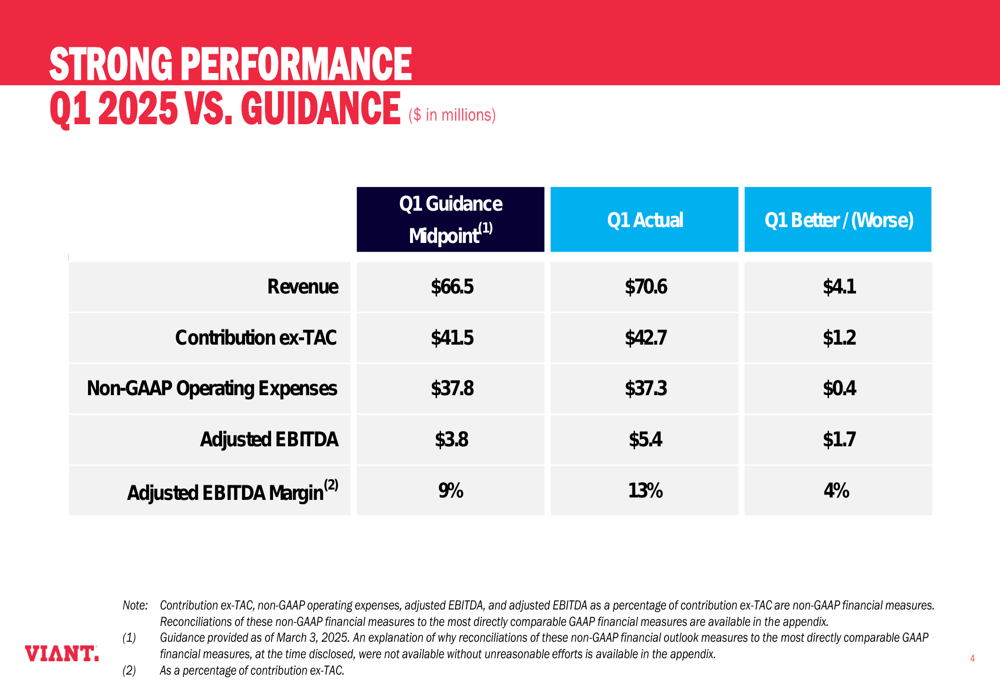
Adjusted EBITDA showed particularly impressive growth, increasing 76% year-over-year to $5.4 million, with margins expanding to 13% from 9% in the prior year period. This represents a 360 basis point improvement in adjusted EBITDA margin.
The following chart illustrates the company’s revenue and contribution ex-TAC growth:

Detailed Financial Analysis
Viant has maintained consistent growth in its key financial metrics over multiple quarters. The first quarter of 2025 marked the seventh consecutive quarter of contribution ex-TAC growth exceeding 20% year-over-year, and the ninth consecutive quarter of adjusted EBITDA growth over 30%.
The company’s non-GAAP operating expenses increased 20% year-over-year to $37.3 million, but decreased as a percentage of contribution ex-TAC, indicating improving operational efficiency. Excluding acquisitions, non-GAAP operating expenses increased just 14% year-over-year.
The following chart shows the growth in non-GAAP operating expenses and adjusted EBITDA:
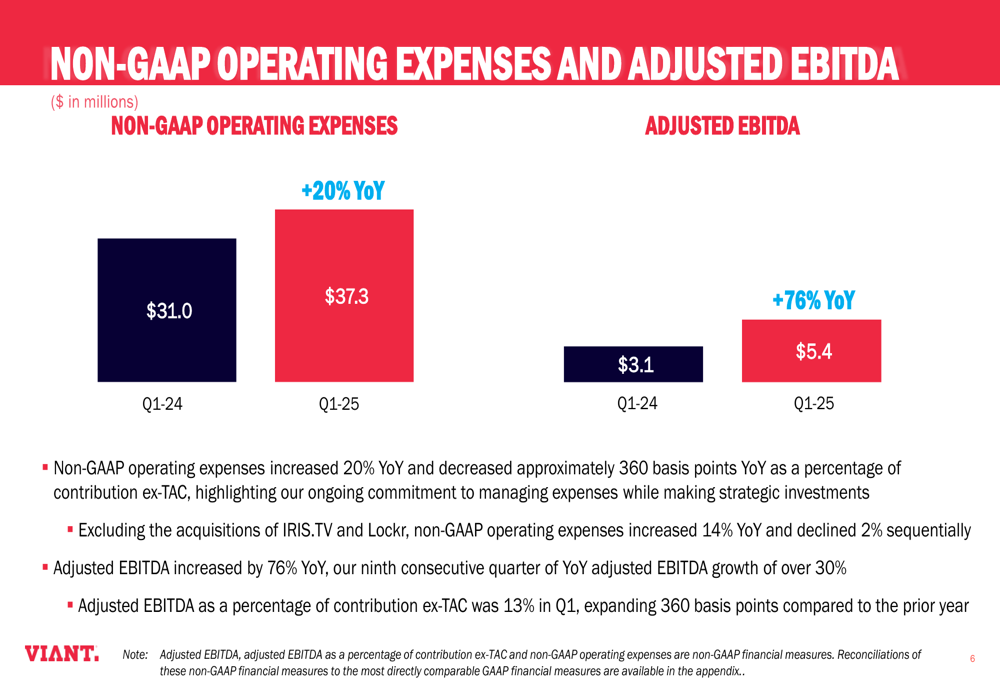
Viant’s quarterly financial performance demonstrates consistent improvement across key metrics:
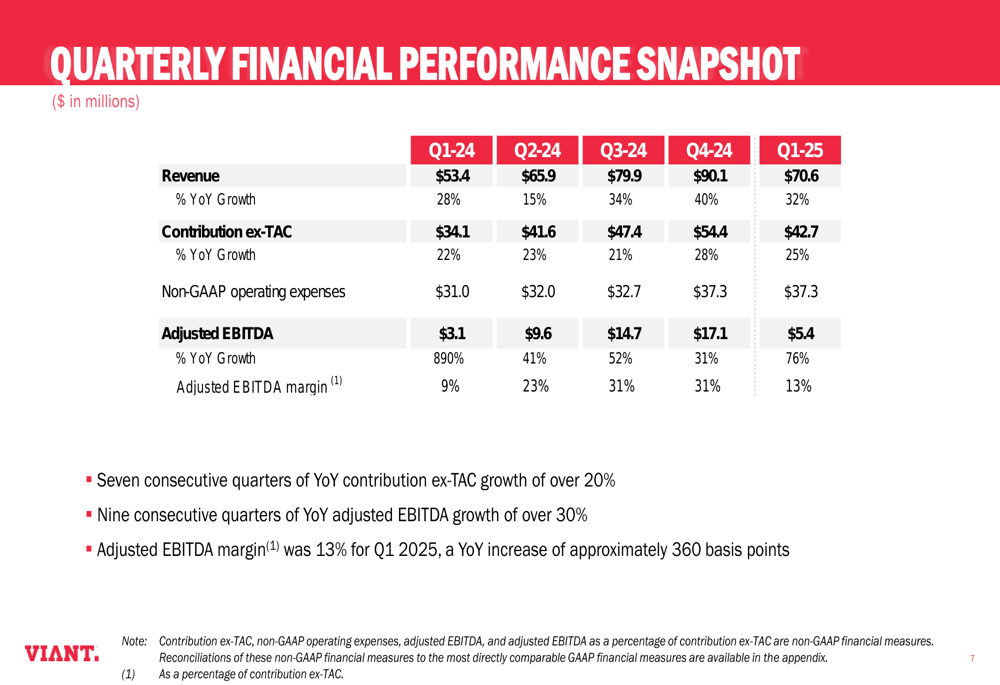
The company has maintained strong contribution ex-TAC growth over seven consecutive quarters, as illustrated in this chart:
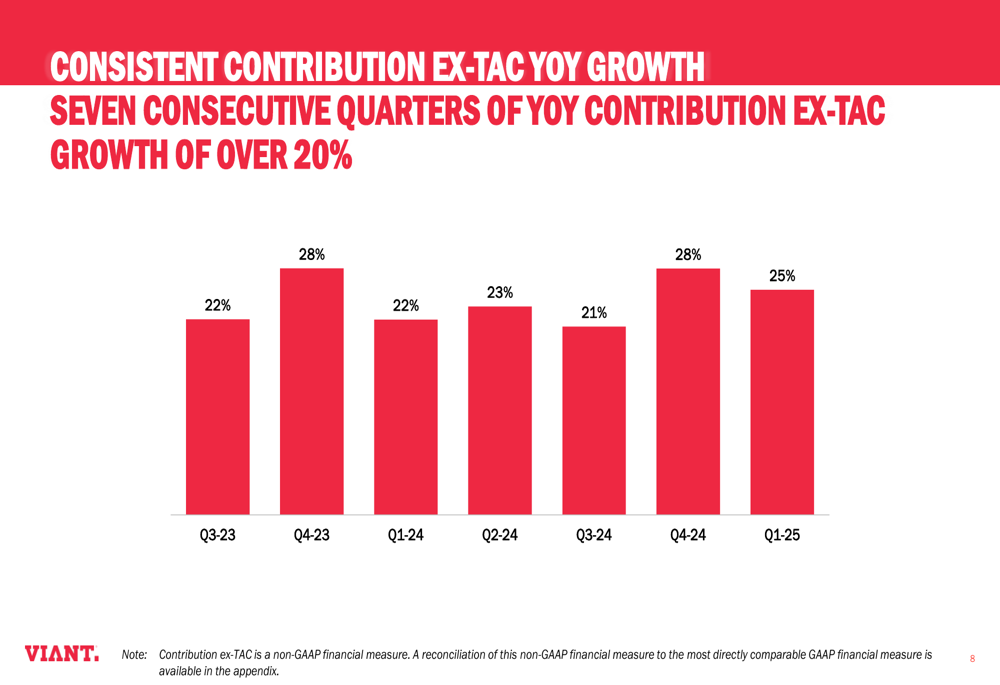
Strategic Initiatives & CTV Growth
Connected TV continues to be a primary growth driver for Viant, with CTV spend now surpassing 45% of total advertiser spend on the platform. This strategic focus aligns with broader industry shifts toward streaming and connected TV advertising.
The company’s strong cash position of $174 million with no debt provides significant financial flexibility. Viant has been actively repurchasing shares, buying back 3.5 million shares of Class A common stock from May 1, 2024, through May 2, 2025, for a total of $46.5 million. The board has approved an increase to the existing share repurchase program to repurchase up to an additional $50 million of common stock.
This capital allocation strategy suggests management’s confidence in the company’s long-term prospects and potential belief that shares are undervalued at current levels.
Forward-Looking Statements
For the second quarter of 2025, Viant provided the following guidance:
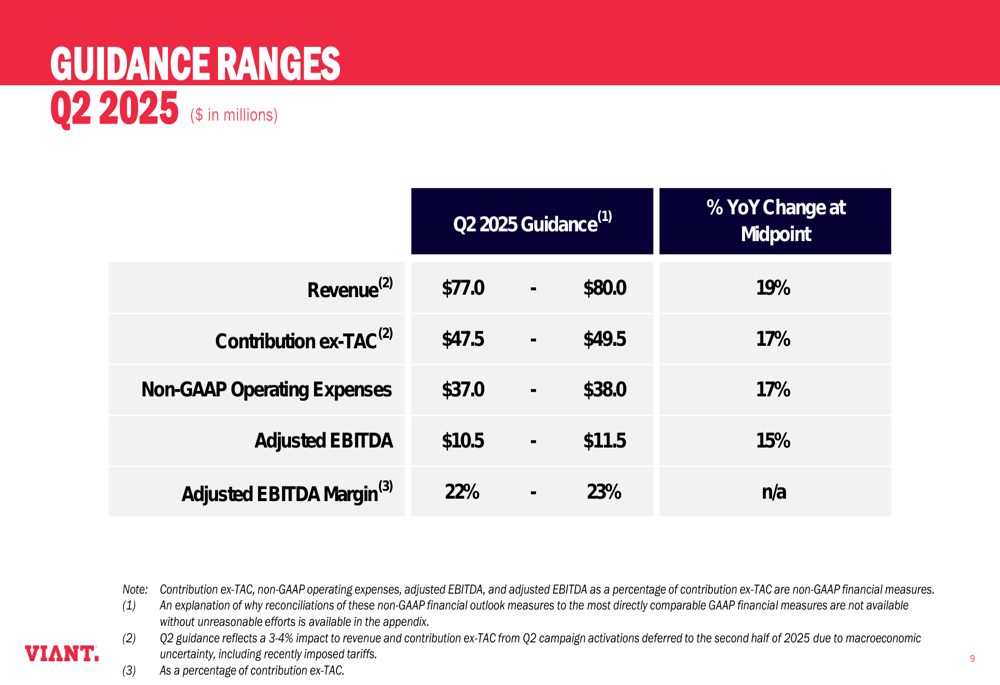
The company expects Q2 2025 revenue between $77.0 million and $80.0 million, representing 19% year-over-year growth at the midpoint. Contribution ex-TAC is projected to be between $47.5 million and $49.5 million, a 17% increase year-over-year at the midpoint.
Adjusted EBITDA is expected to be between $10.5 million and $11.5 million, with margins between 22% and 23%. The guidance reflects a 3-4% impact to revenue and contribution ex-TAC from Q2 campaign activations being deferred to the second half of 2025 due to macroeconomic uncertainty.
This outlook suggests continued strong performance despite some caution regarding the timing of campaign activations in the current economic environment. Viant’s valuation metrics and share structure as of May 5, 2025, are detailed below:
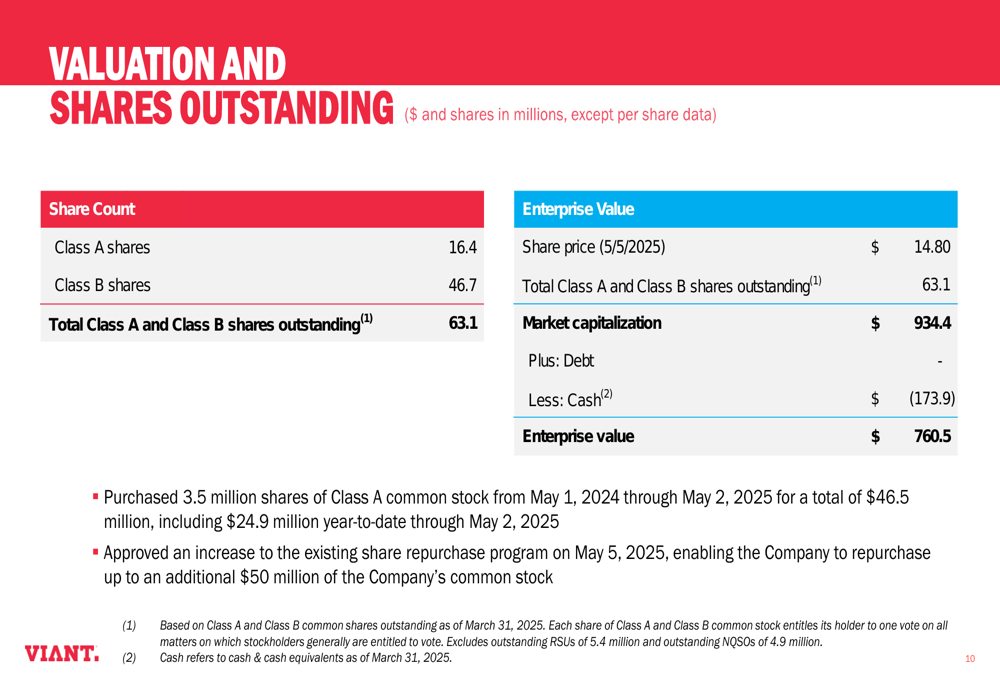
Viant’s Q1 2025 results demonstrate the company’s continued execution of its growth strategy, particularly in the expanding CTV market. With strong financial performance, a healthy balance sheet, and active capital return program, the company appears well-positioned to maintain its growth trajectory through 2025, despite some potential macroeconomic headwinds affecting campaign timing in the near term.
Full presentation:
This article was generated with the support of AI and reviewed by an editor. For more information see our T&C.
